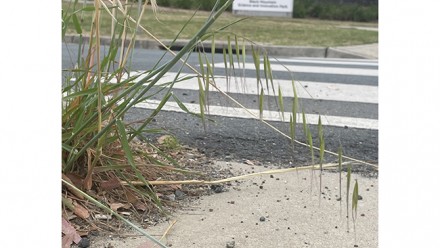News & events
Fuzzy ducklings alert! But watch out for the parents
Spring isn't all it's quacked up to be. Pollen levels are high, magpies are terrorising cyclists and pedestrians alike, and protective duck parents are in attack mode.‘Impressive rafting skills’: the 8-million-year old origin story of how rodents colonised Australia
Our new research unites genomic sequencing and museum collections to reconstruct the evolutionary tale of native rodents, including many extinct and elusive species – and they have a fascinating origin story.How to survive magpie swooping season
If swooping season strikes fear into your heart, you're not alone. Fortunately, Dr Chaminda Ratnayake from the ANU Research School of Biology has the intel you need to navigate the great outdoors this spring.Pages
E&E PhD Exit Seminar: Genomic epidemiology of oat crown rust disease in Australia and abroad uncovers diverse mechanisms to generate diversity
Event recordings
19 February 2021
Weliton Menario Costa, Kruuk Group, E&E, RSB
The study of animal ‘personality’, or consistent individual differences in behaviour, has received much attention in the last two decades, but several important questions remain...
11 December 2020
Fonti Kar, Noble Group, E&E, RSB
Animals live in an ever-changing world, but environmental perturbations are occurring at an alarming rate - threatening biodiversity and population persistence.
8 December 2020
Helmut Simon, Huttley Group, E&E, RSB
I examine how some established population genetic models can be extended to accommodate insights from newer data and analytic methods.
4 December 2020
Claire Taylor, Langmore Group, E&E, RSB
Individuals can benefit by varying their investment in offspring. The optimal amount of investment may vary in relation to both climatic conditions and social conditions (such as...
27 November 2020
Carlos Pavon, Keogh Group, E&E, RSB
Why do organisms look the way they do? Why do they live where they do? Wy are some groups more diverse than others? These basic questions are often addressed at different scales...
27 November 2020
Shukhrat Shokirov, Foley Group, E&E, RSB
Vegetation structure is an important habitat element for many animals.
12 November 2020
Marlene Zuk, University of Minnesota, USA
By nature of their conspicuousness, sexual signals can cause a conflict between natural and sexual selection, with natural selection favoring a decrease in exaggeration of an...
10 November 2020
Dr Thomas Guillemaud & Dr Denis Bourguet, INRA, Montpellier
The Peer Community in (PCI) project offers an alternative to the current system of publication - which is particularly expensive and not very transparent.
6 November 2020
Tobias Hayashi, Peakall Group, E&E, RSB
The cross-kingdom mimicry of female insect sex pheromones by sexually deceptive orchids has fascinated evolutionary biologists ever since the importance of chemistry in...
29 October 2020
Thomas Aubier, University of Zurich, Switzerland
Any antagonistic interaction has the potential of favouring sex, just as predicted by the "Red Queen hypothesis" in the case of host-parasite interactions. Is it really...
- ‹ previous
- 7 of 10
- next ›








